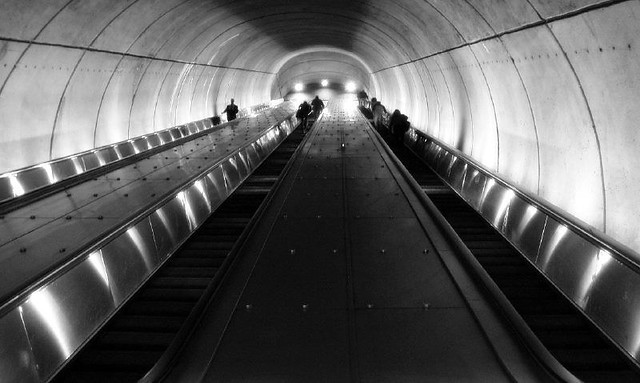Warning: F-word ahead: Making the rounds today is a website so pure in its simplicity that it needs no further introduction. Presented for your approval is IstheLtrainf**ked.com. It is the brainchild of Jonathan Vingiano, a programmer who often relies on the L train, and in a short post introducing the concept, he explains how he used the MTA API to provide real-time updates one everyone’s favorite subway line. “Almost every day,” he says, “I find myself asking one question: ‘Is the L train f**ked?'”
As he explains how the site work, the post ends up being one praising the MTA’s new focus on working with developers. Vingiano, who posted his source code, writes, “The website’s info is no more than 60 seconds old and is a good way to find out if maybe you should be taking a cab home instead of waiting around for 45 minutes or so. The app is using the MTA’s official API (which is great btw), Sinatra, Heroku, and GitHub. These awesome tools let people like me release fun apps.” So there you have it. This is the MTA API at its most simple and direct. Would L train riders have it any other way?

 While the MTA has decided that Clever Devices’ price tag is simply too steep for the city, New Jersey Transit is moving ahead with the company’s equipment to institute a real-time bus tracking system, the agency announced yesterday. The Board of Directors of voted to authorize a $22 million deal that will outfit the so-called smart bus equipment on around 1040 buses, and New Jersey Transit bus riders will finally have a real-time bus-tracking system at their disposal.
While the MTA has decided that Clever Devices’ price tag is simply too steep for the city, New Jersey Transit is moving ahead with the company’s equipment to institute a real-time bus tracking system, the agency announced yesterday. The Board of Directors of voted to authorize a $22 million deal that will outfit the so-called smart bus equipment on around 1040 buses, and New Jersey Transit bus riders will finally have a real-time bus-tracking system at their disposal.
 For the past few months, I’ve been enmeshed in the MTA’s finances stretching back to 1970, and I can see now why politicians have such a tenuous grasp on how the authority is funded. The MTA is made up of various constituent agencies that each operate essentially for 24 hours a day, seven days a week. It has a massive payroll, an extensive operating budget and a separate capital budget. For state legislators who must balance competing demands, understanding this financial structure isn’t — and probably shouldn’t be — a top priority.
For the past few months, I’ve been enmeshed in the MTA’s finances stretching back to 1970, and I can see now why politicians have such a tenuous grasp on how the authority is funded. The MTA is made up of various constituent agencies that each operate essentially for 24 hours a day, seven days a week. It has a massive payroll, an extensive operating budget and a separate capital budget. For state legislators who must balance competing demands, understanding this financial structure isn’t — and probably shouldn’t be — a top priority. 



 Last week, for the first time since the end of December, I had to buy a new 30-day MetroCard, and although I’ve long known that this card would set me back a triple-digit figure, I wasn’t prepared for the sticker shock. That $104 fee is a steep one. For those still using their stockpiled $89 cards, today is a big day for at 11:59 p.m. tonight, the sun will set on any remaining 30-day cards, and those cards will expire.
Last week, for the first time since the end of December, I had to buy a new 30-day MetroCard, and although I’ve long known that this card would set me back a triple-digit figure, I wasn’t prepared for the sticker shock. That $104 fee is a steep one. For those still using their stockpiled $89 cards, today is a big day for at 11:59 p.m. tonight, the sun will set on any remaining 30-day cards, and those cards will expire. 